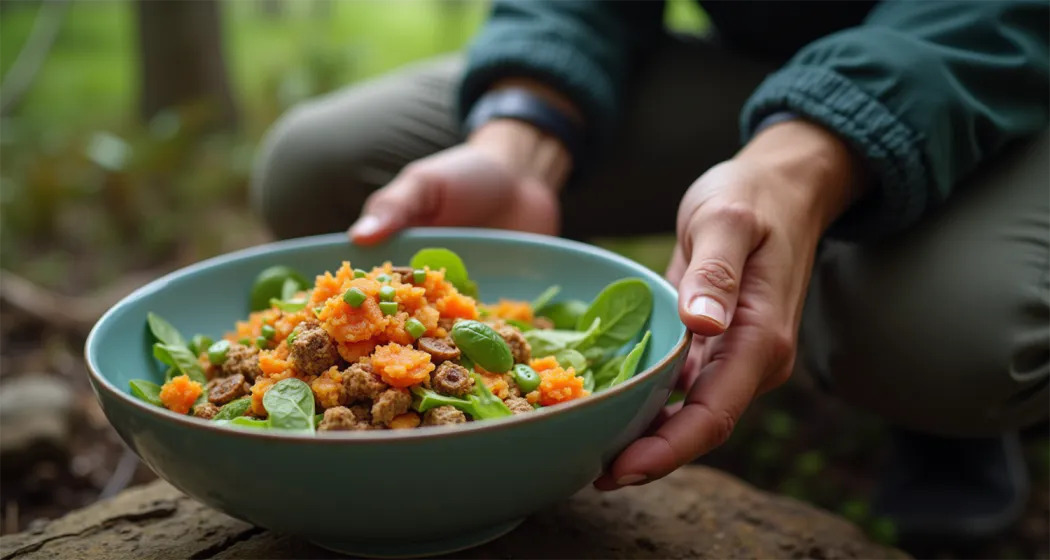
High Protein Camping Salads and Bowls for Long Adventures
Fuel your outdoor adventures with protein-packed, no refrigeration camping salads and bowls. These easy to make meals keep you energized and prepared for any journey.
Camping combines the thrill of exploring the great outdoors with the challenge of staying fueled and healthy. When you’re trekking long distances, climbing rugged trails, or setting up camp under the stars, your body needs Protein Packed Salads and Bowls or other high-protein meals to sustain energy, aid muscle recovery, and keep hunger at bay. However, limited access to refrigeration and cooking equipment can make meal prep tricky.
The solution? Protein packed salads and bowls that are lightweight, shelf stable, and easy to prepare. This comprehensive guide provides everything you need to know about crafting nutrient-rich meals for camping, including recipes for Quinoa and Black Bean Bowls, Tuna and White Bean Salad, Chicken Salad Lettuce Wraps, Edamame Salad, and more. Along the way, we’ll share essential tips for packing non perishable protein sources, ensuring your camping trip is both delicious and nutritious.
Why Protein Packed Salads and Bowls Are a Must for Camping Adventures
Energy That Lasts All Day
Protein slows the digestion of carbohydrates, providing a steady release of energy. This is crucial during physically demanding activities like hiking, climbing, or paddling. Unlike quick-burning carbs, protein sustains your energy levels, keeping you going for hours.
After a day of trekking, protein helps repair muscles, reducing soreness and fatigue. Without adequate protein, your recovery slows, leaving you fatigued and less ready for the next day’s adventures. Learn more about the importance of protein for energy and muscle recovery from Harvard T.H. Chan School of Public Health.
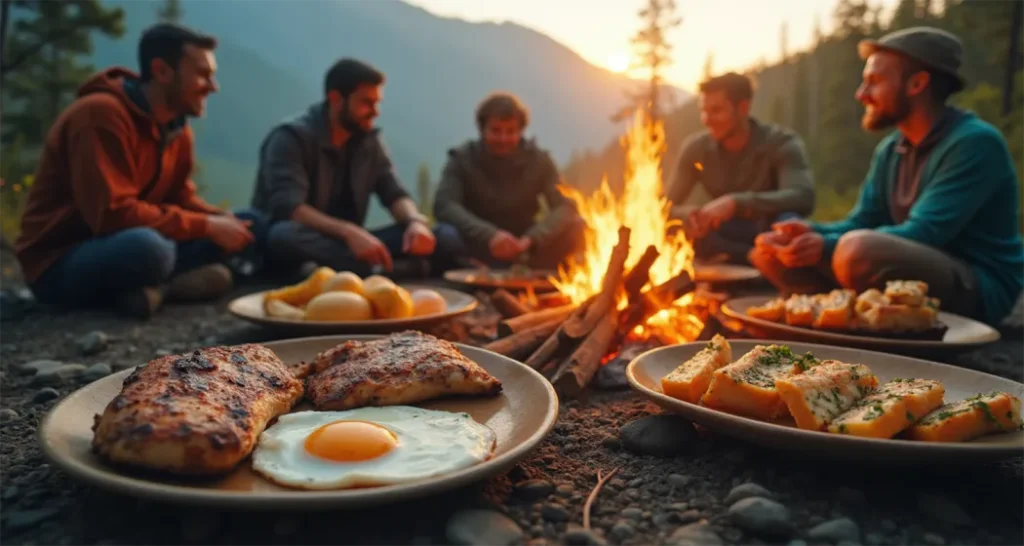
Muscle Recovery and Repair
Camping often involves intense physical exertion, from setting up tents to carrying heavy backpacks. Protein is essential for repairing muscles and reducing post activity soreness. Without adequate protein, your recovery slows, leaving you fatigued and less ready for the next day’s adventures.
Hunger Control
Protein is more satiating than fats or carbs, meaning it helps you feel full longer. This is especially important during camping trips, where access to snacks and meals may be limited. A high-protein breakfast can prevent mid-morning hunger pangs, while a protein-packed dinner ensures restful sleep.
Key Takeaway: Active campers should aim for 0.6–0.8 grams of protein per pound of body weight daily. For a 150-pound person, this equates to 90–120 grams of protein.
Overcoming Challenges: Preparing Protein Packed Salads and Bowls Without Refrigeration
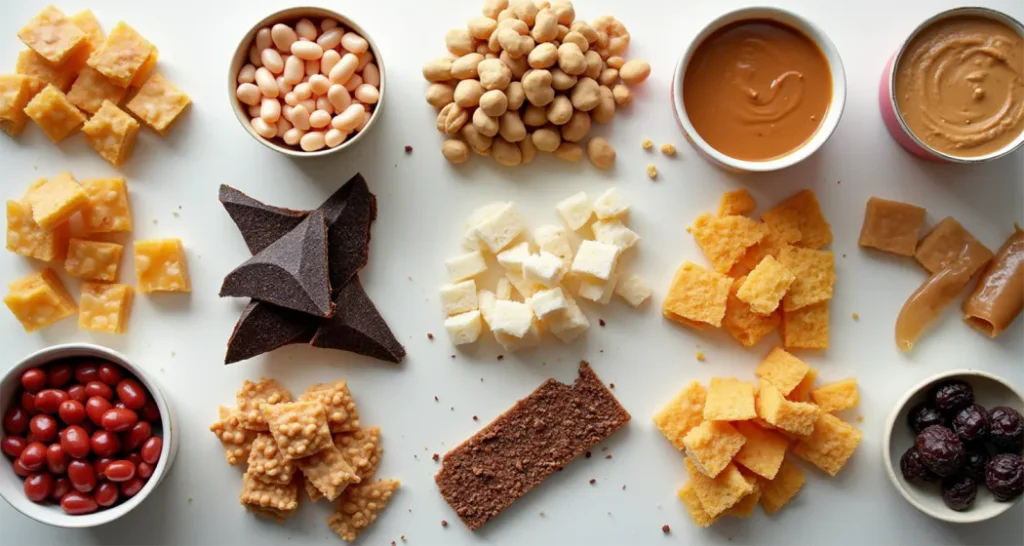
Spoilage
Fresh meats, dairy, and eggs spoil quickly without refrigeration. When camping for extended periods, relying on these perishable items isn’t practical.
Weight and Space Constraints
Carrying heavy, bulky foods on a backpacking trip isn’t ideal. Lightweight, compact ingredients are a must.
Limited Cooking Options
Many campsites lack the facilities needed for complex meal prep. Lightweight stoves or campfires often limit what you can prepare.
Solutions
- Choose non-perishable protein sources like canned meats, dried beans, nuts, seeds, and protein powders.
- Use vacuum-sealed bags and lightweight containers to optimize storage.
- Pre-cook ingredients at home and pack them for easy assembly.
Top No-Refrigeration Protein Sources for Camping
1. Canned Meats and Fish
- Why They Work: Shelf-stable and lightweight, canned tuna, salmon, chicken, and turkey are versatile protein sources.
- Tips: Opt for single-serve packets to reduce waste. Drain liquids to save on weight and avoid messes.
- Usage Ideas: Mix with beans for salads, spread on crackers, or eat directly from the can for a quick protein boost.
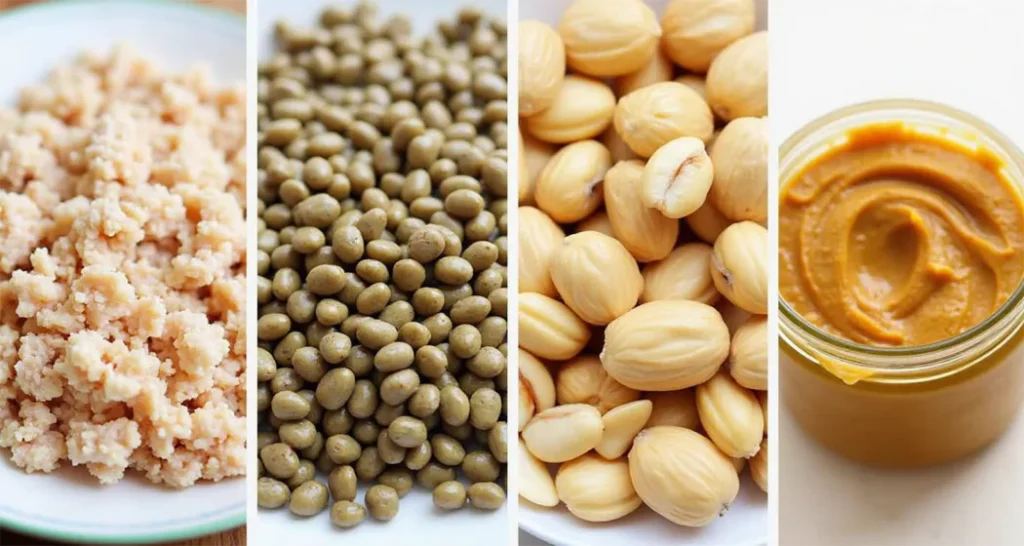
2. Dried and Canned Legumes
- Why They Work: Beans, lentils, and chickpeas are rich in protein and fiber, making them filling and nutritious.
- Tips: Pre-cook dried beans at home or use canned varieties for convenience.
- Usage Ideas: Toss them into salads, mash into spreads, or eat as standalone sides.
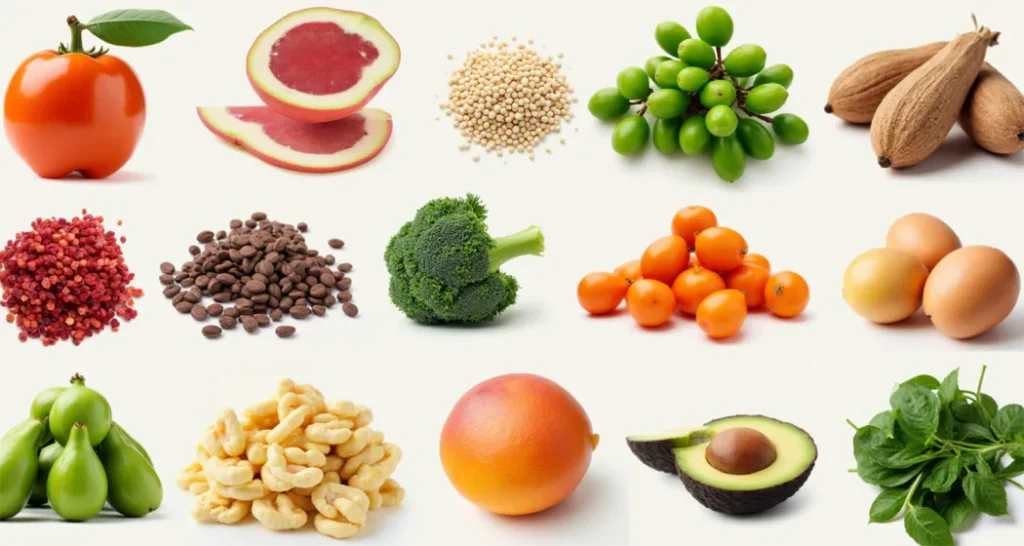
3. Nuts and Seeds
- Why They Work: Lightweight, calorie-dense, and packed with protein and healthy fats, they’re ideal for snacking or as salad toppings.
- Tips: Store in resealable bags to maintain freshness. Mix varieties for flavor and texture.
- Usage Ideas: Sprinkle on quinoa bowls or mix with dried fruit for trail mix.
4. Nut Butters
- Why They Work: Shelf-stable and versatile, peanut butter, almond butter, and sunflower seed butter provide plant-based protein.
- Tips: Use single-serve packets to reduce bulk.
- Usage Ideas: Spread on crackers, stir into oatmeal, or use as a dip for fruits and vegetables.
5. Jerky and Meat Sticks
- Why They Work: Jerky made from beef, turkey, or plant-based proteins is lightweight and protein-packed.
- Tips: Look for low-sodium options to avoid dehydration.
- Usage Ideas: Snack on them during hikes or chop and add to salads.
6. Protein Powders
- Why They Work: Lightweight and easy to mix, protein powders are perfect for shakes or adding to oatmeal.
- Tips: Use single-serve packets to avoid mess.
- Usage Ideas: Stir into water, smoothies, or pancake batter.
Delicious High Protein Camping Recipes
1. Quinoa and Black Bean Bowl
- Ingredients:
- 1 cup cooked quinoa
- 1 can black beans (rinsed)
- 1 red bell pepper (diced)
- 1 cup corn (canned or fresh)
- Lime juice, olive oil, cumin, salt, and pepper
- Instructions:
- Toss all ingredients in a bowl. Season with lime juice, olive oil, and spices.
- Optional Boost: Add avocado or roasted pumpkin seeds.
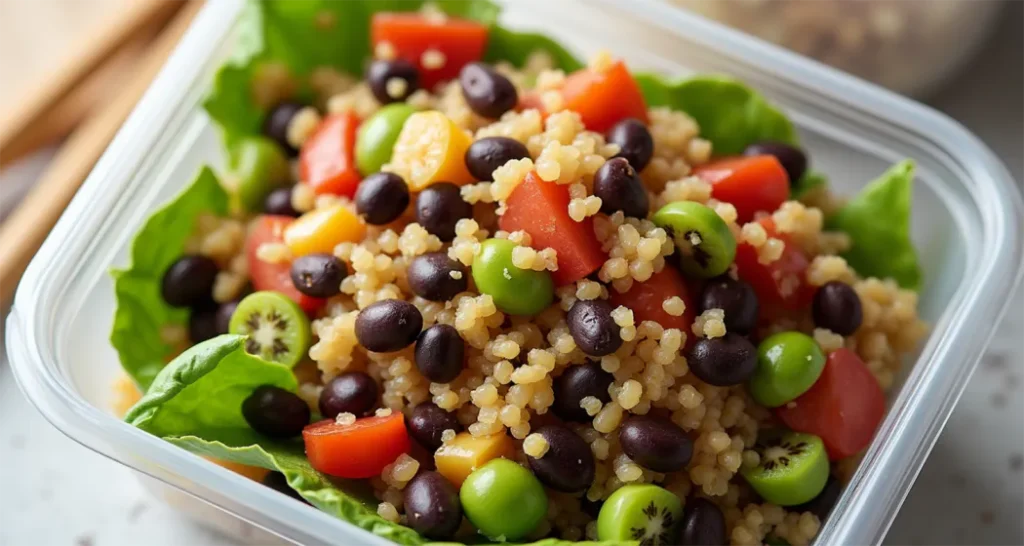
2. Tuna and White Bean Salad
- Ingredients:
- 1 can tuna (drained)
- 1 can white beans (rinsed)
- 1 small red onion (finely chopped)
- Lemon juice, olive oil, parsley
- Instructions:
- Mix tuna and beans. Add onion, parsley, and dressing.
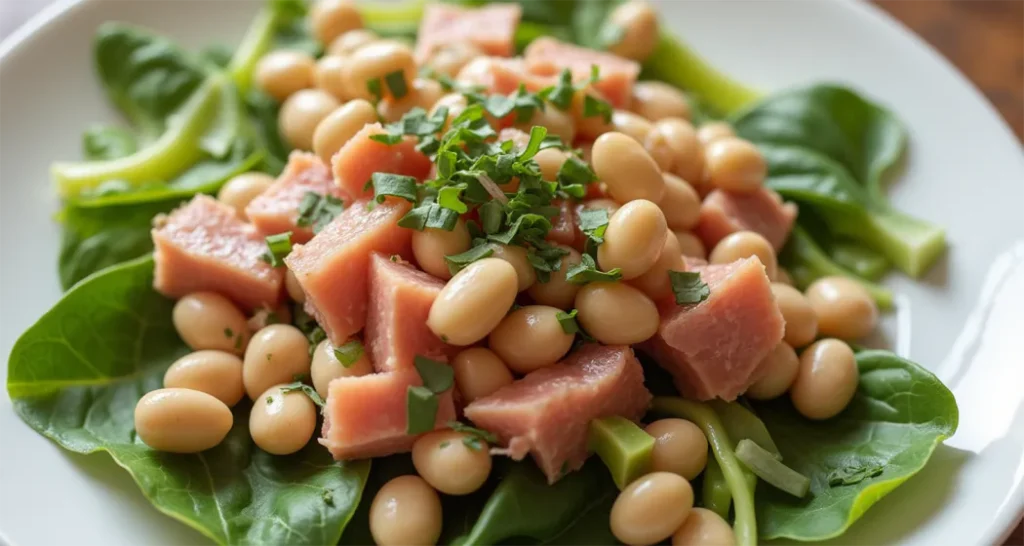
3. Chicken Salad Lettuce Wraps
- Ingredients:
- 1 can chicken (drained)
- 1/4 cup mayo (single-serve packets)
- 1 stalk celery (diced)
- Romaine lettuce leaves
- Instructions:
- Mix chicken, mayo, and celery. Spoon into lettuce leaves.
For even more refreshing salad ideas, explore our 10 Easy Camping Salads and Bowls to elevate your outdoor meals
4. Edamame Salad
- Ingredients:
- 1 cup rehydrated edamame
- 1/2 cup shredded carrots
- 1/2 cucumber (diced)
- Sesame oil, soy sauce, honey
- Instructions:
- Toss all ingredients and garnish with sesame seeds.
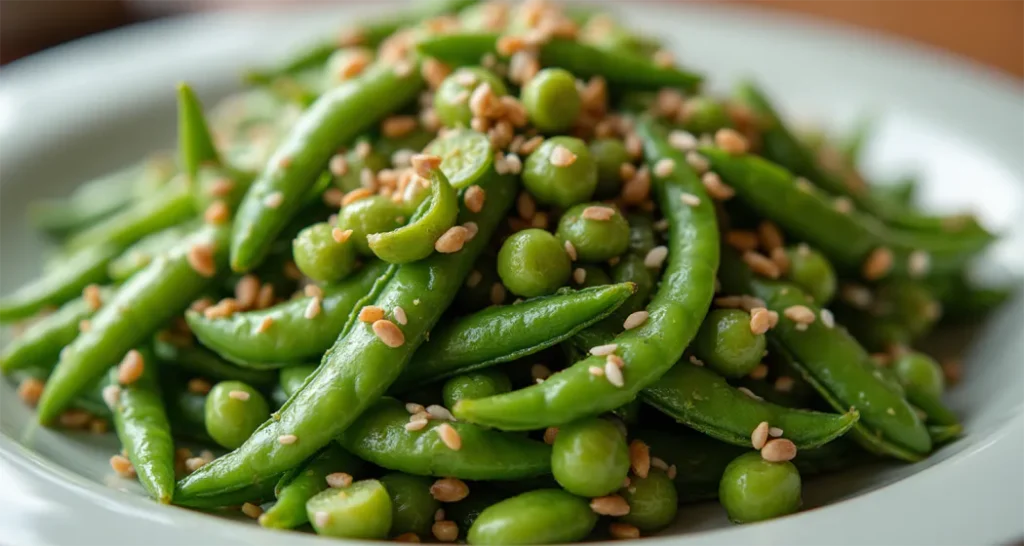
5. Lentil and Sun-Dried Tomato Bowl
- Ingredients:
- 1 can lentils (rinsed)
- Sun-dried tomatoes, olives, olive oil, oregano
- Instructions:
- Combine all ingredients. Season to taste.
How to Pack and Prepare Meals for Camping
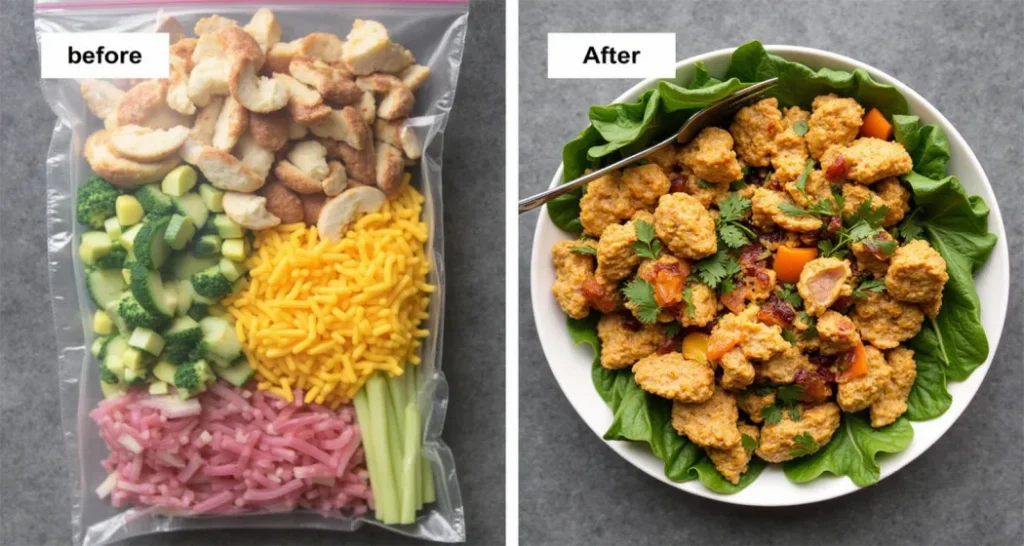
1. Pre-Cook Ingredients
Cooking grains, beans, and proteins at home saves time and minimizes hassle at camp.
2. Invest in Lightweight Gear
Collapsible silicone containers and vacuum-sealed bags reduce bulk and keep ingredients fresh.
3. Use Sturdy Produce
Carrots, cucumbers, and bell peppers last longer than delicate vegetables like lettuce.
4. Plan Single-Serve Portions
Pre-portion condiments and ingredients to reduce waste and simplify prep.
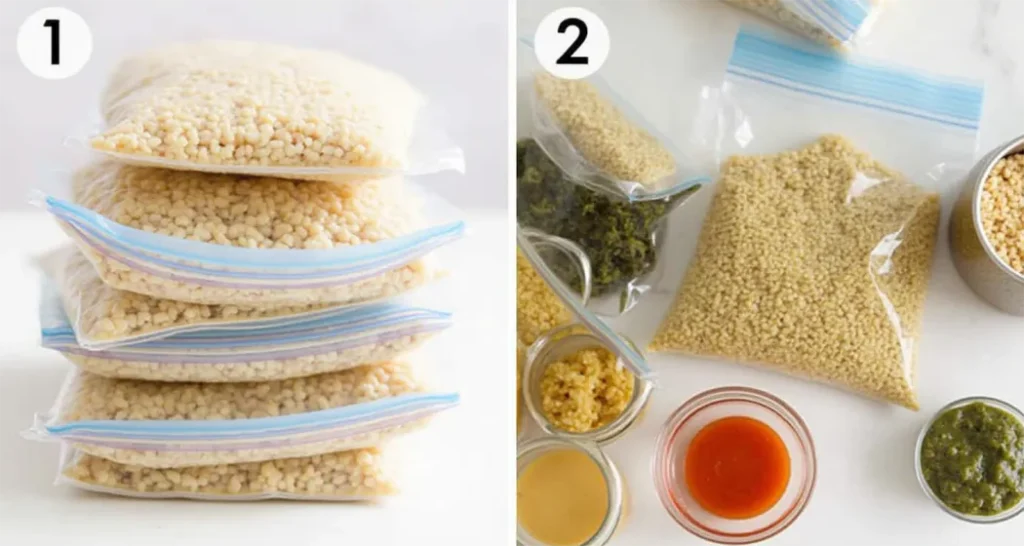
Make meal prep a breeze by following our Ultimate Guide to Packing and Storing Camping Meals
FAQs About High-Protein Camping Meals
What are the best protein sources for camping?
Canned meats, dried legumes, nut butters, and protein powders are reliable, shelf-stable options.
Can these meals be prepared in advance?
Yes! Pre-cook grains and legumes or chop vegetables for easy assembly at camp.
Are these meals suitable for kids?
Absolutely. Add kid friendly ingredients like peanut butter or mild seasonings to suit their tastes.
With these Protein Packed Salads and Bowls, along with preparation tips, staying nourished on your camping trip is easier than ever. By incorporating lightweight, shelf-stable protein sources, you can enjoy healthy, delicious meals that fuel your adventures.
Enjoy these recipes? Share this guide with your fellow campers and subscribe for more outdoor cooking tips.
